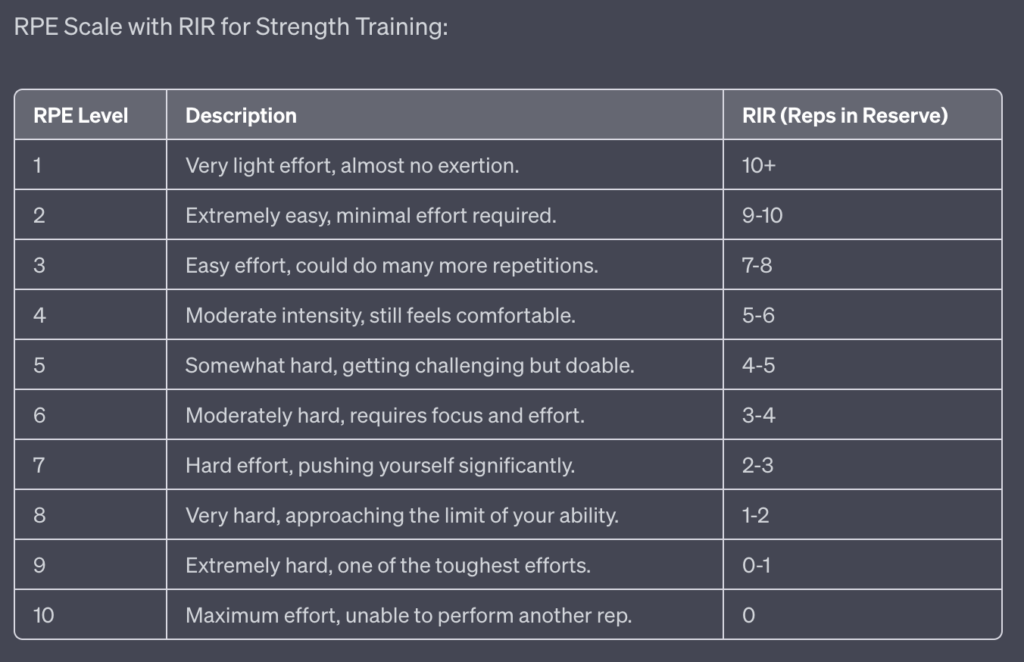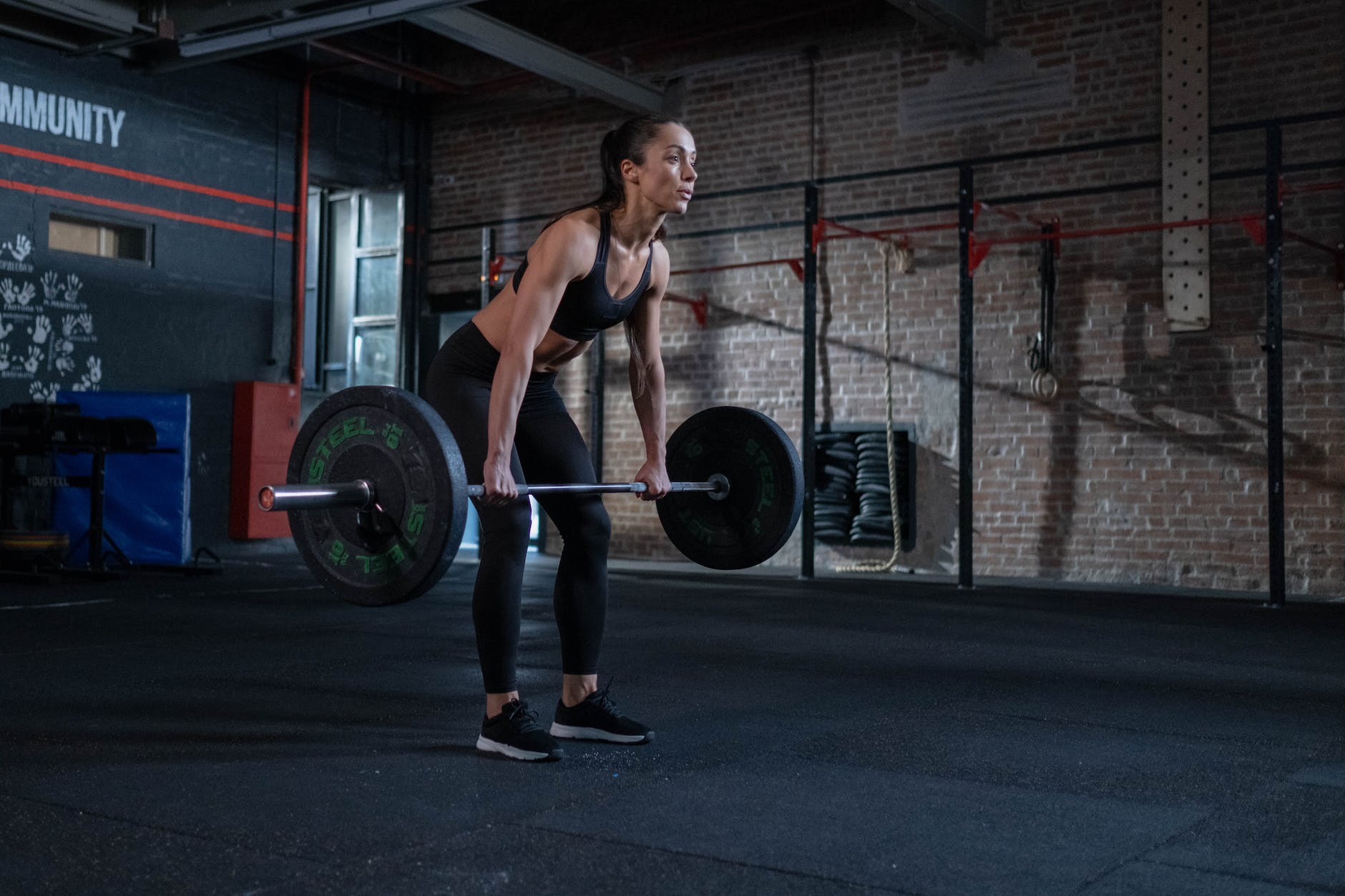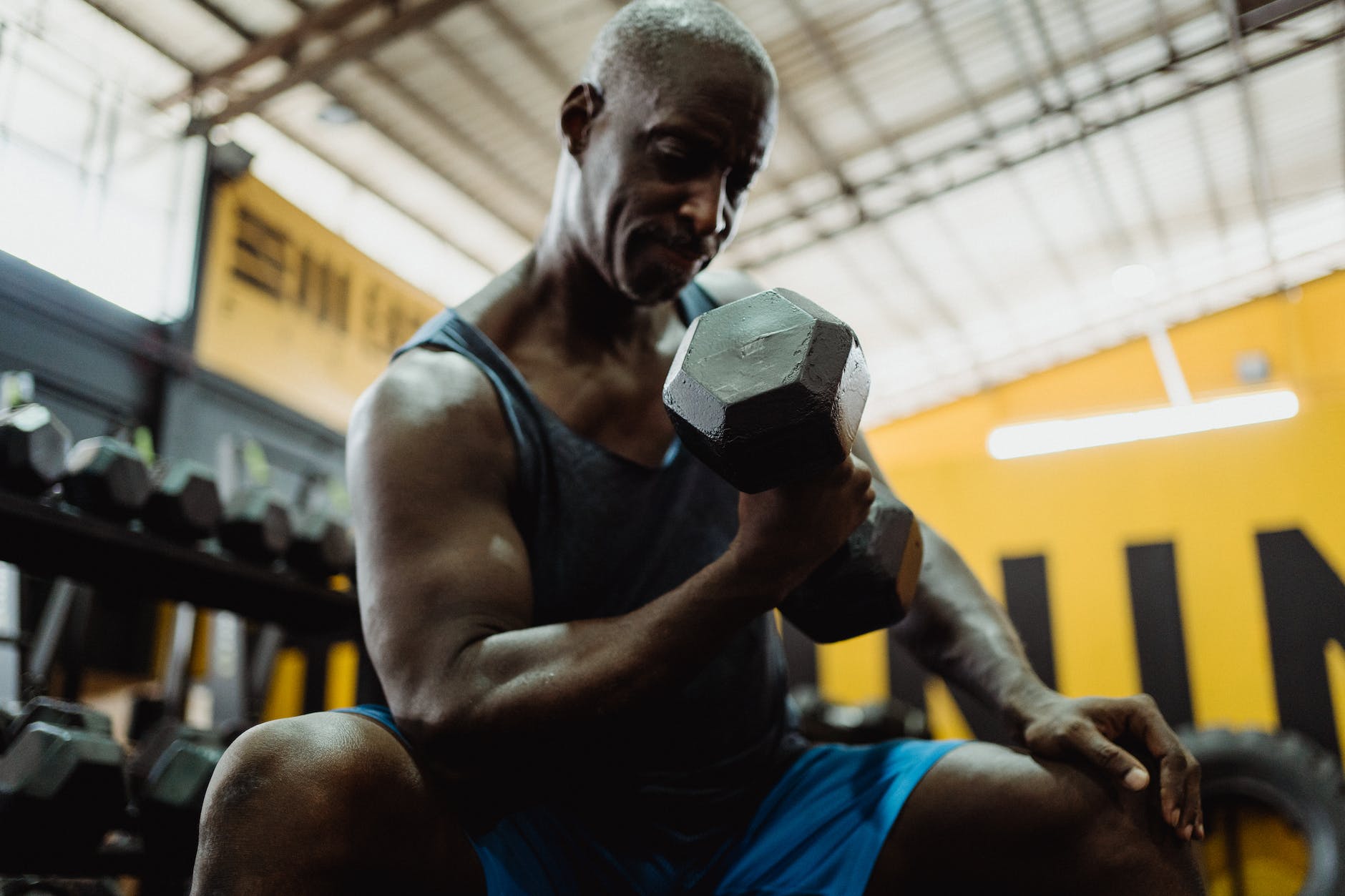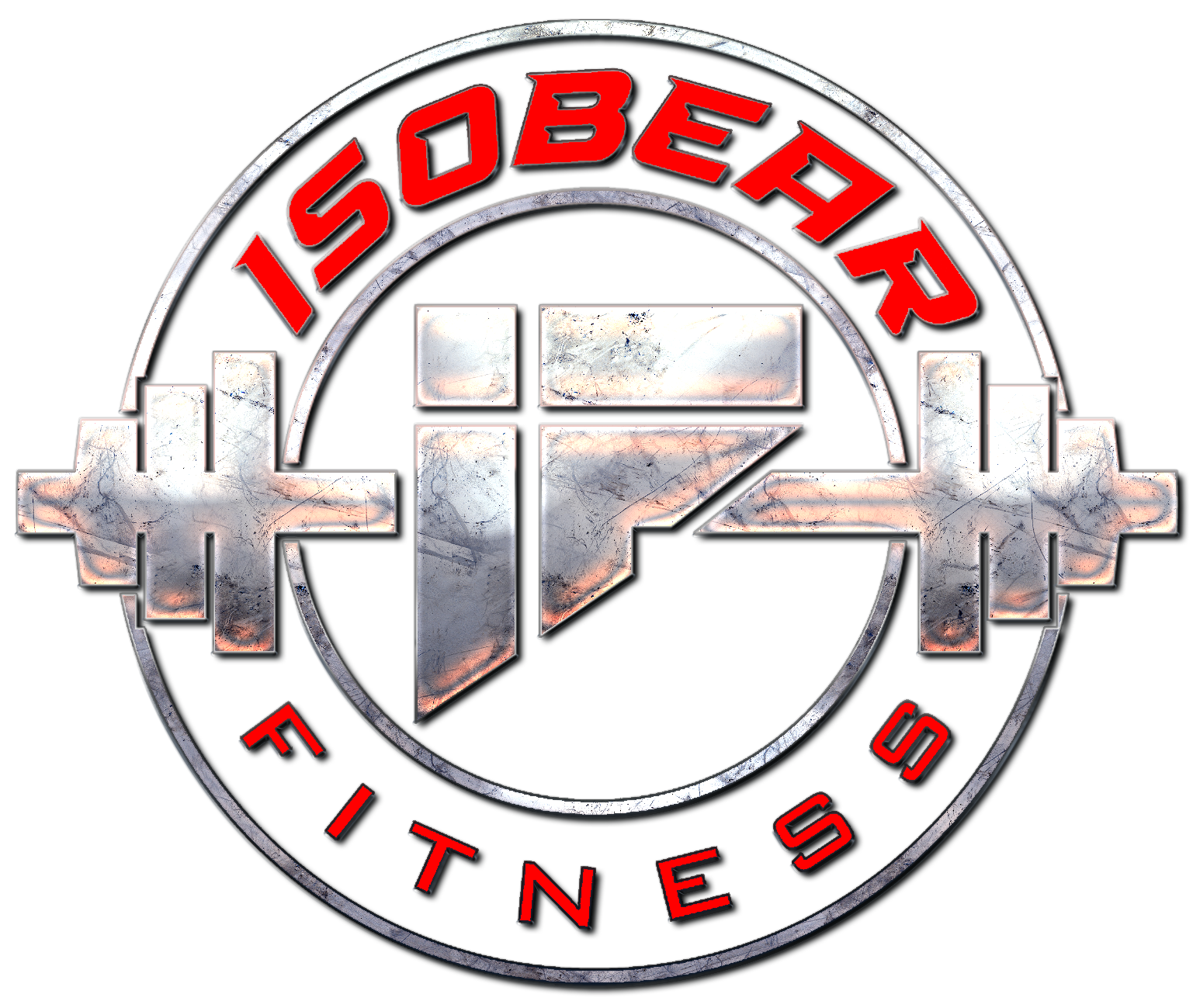Have you ever felt unsure about how much more you can push yourself during your strength training workouts? Or maybe you’ve wondered if you’re truly maximizing your potential. These questions can be answered using two concepts: Rate of Perceived Exertion (RPE) and Reps in Reserve (RIR). By understanding and incorporating these scales into your routine, you can not only enhance your performance but also reduce your risk of injury.
RPE and RIR are powerful tools that can transform your strength training journey. They offer a scientific approach to measuring your workout intensity and gauging your personal limits. By paying attention to these metrics, you’ll be able to fine-tune your workouts to match your current capabilities and future goals. The beauty of RPE and RIR is that they allow you to listen to your body and respect its boundaries, while still challenging yourself to improve. Don’t let the ambiguity of effort and potential hold you back any longer. Embrace the clarity that RPE and RIR can offer, and take your strength training to the next level.
Overview of RPE and RIR
Understanding RPE (Rate of Perceived Exertion) and RIR (Repetitions in Reserve) can dramatically improve your fitness journey. We’ll explain what they are, how to effectively use them, and measures to quantify your efforts. Whether you’re a beginner or a seasoned athlete, integrating RPE and RIR into your routine can revolutionize your workouts. So, let’s delve into it and optimize your fitness game!
What Is RPE?
Now that we’ve dissected the importance of tracking workout intensity, let’s delve deeper into one of the most effective tools for this purpose. Imagine having an accurate, easy-to-use gauge to measure how hard you’re pushing yourself in the gym. Rate of Perceived Exertion (RPE) is exactly that tool.
RPE is a scale that tracks the intensity of your exercise based on how hard you feel like you’re working. It’s a highly personal, subjective measure that allows you to listen to your body and adjust your workouts accordingly. While the scale typically goes from 1 (no exertion at all) to 10 (maximum effort), different versions exist depending on the type of exercise and the individual’s fitness level.
Remember, everyone’s perception of effort is unique. What might feel like a 7 in effort for one person could feel like a 9 for another. We’re not looking for a universal standard of intensity. Instead, we’re after your personal perception of effort.
Using RPE enables you to connect with your body on a deeper level, understand your limits, and challenge them when appropriate. It’s time to stop second-guessing your workout intensity. Start using RPE today and witness the change it brings to your fitness journey!
What Is RIR?
Moving along to our next key point, let’s explore the concept of RIR. RIR stands for Repetitions in Reserve. It’s a user-friendly approach to gauging your workout intensity, allowing you to understand how many reps you could have done beyond the point of stopping.
Think about it like this: If you performed 10 repetitions of a certain exercise and felt you could do two more, your RIR would be 2. This way, you’re not just counting your reps but also understanding your physical limits and potential.
But you might be wondering, “Why is this important?”
The answer is simple but profound. Utilizing RIR provides a more accurate representation of your workout intensity and fatigue level. It’s not about just doing the movements. It’s about doing them with intention and precision. This way, you can better manage your workouts, prevent overtraining, and strategically plan your workout progression.
In essence, RIR is a real game-changer in your fitness journey. It allows you to not just perform but to excel. So embrace RIR, understand your limits, and watch your fitness performance skyrocket.
How to Use RPE and RIR
Now imagine this: You’ve gained an understanding of what RPE and RIR are, but how do you put these concepts into practical use? Well, it’s easier than you might think!
Firstly, let’s take a look at RPE. This is a subjective measurement, which means you need to be honest with yourself about how much effort you’re exerting during a workout. It’s a scale from 1 to 10, with 1 being no exertion at all and 10 being the maximum effort you can possibly give. When using RPE, aim to train at a level that challenges you but doesn’t push you into extreme discomfort or the risk of injury.
Now, as for RIR, it also involves a bit of self-awareness. If you’re lifting weights, for instance, RIR refers to the number of reps you think you could still do before reaching muscle failure. Training at an RIR of 1 to 2 means you’re pushing yourself, but not to the point of complete exhaustion.
Remember, using RPE and RIR effectively requires a delicate balance. Listen to your body and adjust your workouts accordingly. With a bit of practice, you’ll be able to fine-tune your training intensity and achieve better results. So, why wait?
Benefits of RPE and RIR
RPE (Rate of Perceived Exertion) and RIR (Reps in Reserve) offer numerous benefits. They allow you to accurately measure training intensity, providing a clear snapshot of your physical exertion. Over time, these tools facilitate the ability to track progress, which not only bolsters motivation but also ensures you’re tracking progress effectively. This increases the likelihood of commitment, encouraging long-term adherence to strength training. Harness the power of RPE and RIR to optimize your training outcomes.
Accurately Measure Intensity
Moving past the basics, let’s delve into the more tangible benefits of RPE and RIR. The first and foremost is their capacity to accurately measure intensity in your workouts.
Picture this: You’re pushing weights at the gym, but you’re unsure if you’re truly straining your muscles to their potential. With RPE and RIR, you have an internal gauge that guides your intensity—a unique tool that tells you when to ramp up the effort or dial it back. It’s your personal intensity thermostat.
But here’s the kicker: This isn’t just about working out harder; it’s about training smarter. The goal isn’t to exhaust yourself to the brink of collapse; it’s to stimulate muscle growth effectively and sustainably. With RPE and RIR, you can pinpoint the precise moment when your muscles are under maximum tension—the sweet spot for muscle growth.
In the end, it’s not about the weight on the bar, but how that weight feels to you. Your perception of effort is crucial to your progress. So don’t leave it to guesswork. Use RPE and RIR to accurately measure your workout intensity and optimize your strength training for stellar results.
Track Progress over Time
After an understanding of the core concepts of RPE and RIR, let’s delve into one of their key benefits: the ability to track progress over time.
In the world of strength training, progress can sometimes feel elusive. Many trainees struggle to gauge whether they’re really getting stronger or just feeling more confident. Here’s where the power of RPE and RIR comes into play. They provide an objective measurement of your training intensity, giving you a clear indicator of your progress.
Think about it. With these metrics, you’re not just counting sets and reps but also effectively monitoring your training exertion and fatigue. This ability to accurately track improvements over time can significantly boost your confidence in the training process. You’re no longer guessing, you’re knowing.
Moreover, by consistently using RPE and RIR, you can identify trends and patterns, enabling you to make informed adjustments to your training program. This can lead to continual progress, avoiding the dreaded plateaus that can stunt your progress and sap your motivation.
So, why not take control of your training? Adopt RPE and RIR today and experience the empowerment of tracking your progress with precision and consistency.
Increase Motivation
To bridge the gap between understanding RPE and RIR, let’s delve into the numerous benefits they offer. First up, increasing motivation
Imagine this: You’re at the gym, pushing through your routine, but the spark just isn’t there. You’re going through the motions, yet you can’t seem to muster up the drive to give it your all. This is where RPE and RIR swoop in. When you use these tools, you’re not just blindly lifting weights or completing reps; you’re working with a purpose. You know exactly how hard you’re pushing yourself and how close you are to your limit.
But that’s not all. Seeing your progress and being able to tangibly measure how much stronger you’re getting week by week—nothing can compare to that. It’s a rush, a thrill that keeps you coming back for more. Suddenly, workouts aren’t a chore; they’re a challenge, something you look forward to conquering.
In essence, RPE and RIR are not just workout tools; they’re powerful motivators. They keep you accountable, they encourage you to push past your boundaries, and they transform your workouts from mundane to exciting. So why not give them a try?
Disadvantages of RPE and RIR
While RPE and RIR are useful training tools, they’re not without drawbacks. Their subjective nature can lead to inconsistent assessments, inaccurately gauging one’s ability. This becomes even more pronounced among novice athletes, who lack the experience to make accurate self-evaluations. This misinterpretation of the RPE scale can potentially result in injuries due to overexertion. Therefore, it’s crucial to understand these risks and apply these methods with caution.
Subjective Assessments
Although RPE and RIR offer numerous benefits, it’s worth noting that they also have their drawbacks. Believe it or not, one of the main disadvantages is the inherent subjectivity of these methods.
The RPE and RIR scales are based on an individual’s perceived exertion and repetitions in reserve, which can vary significantly from person to person. This means that what one athlete deems a “hard” workout may feel like a moderate effort to another. This lack of objectivity can lead to inconsistencies in training intensity and progress.
Moreover, these methods also require an individual to be well-versed in understanding their body’s signals and responses to exercise. This is something that normally takes time and experience to develop. Consequently, these subjective assessments can lead to inaccurate readings, especially among less experienced athletes.
Are you wondering what this means for your training? It implies that relying solely on these methods could lead to a disconnect between your perceived effort and your actual performance. Consequently, this might hinder your progress and prevent you from reaching your full potential.
Therefore, while RPE and RIR can be useful tools in your training arsenal, it’s important to use them in conjunction with other more objective measures to ensure accurate assessments of your workout intensity.
Not Suitable for Beginner Athletes
Now, let’s flip the coin and inspect the other side. While RPE and RIR are superb tools for experienced and mature athletes, they may not be the ideal choice for beginners.
For the novice, these scales can seem like a confusing jumble of numbers and terms. Grasping the differences between RPE 6 and RPE 7, for instance, is no easy task when you’re still struggling to master basic exercise techniques. The nuances between these levels can be so subtle that even professionals occasionally miscalculate. It’s easy to see how a beginner could feel overwhelmed, lost, and even discouraged.
Moreover, new athletes often lack the self-awareness needed to accurately gauge their exertion levels. They may either underestimate their strength, leading to a workout that’s too easy or overestimate it, resulting in unnecessary strain and possible injury.
What’s more, an inaccurate understanding of these scales could lead to inefficient workouts, stunting progress rather than boosting it.
To sum up, while RPE and RIR scales are invaluable tools for the seasoned athlete, they can be a minefield for beginners.
Potential for Injury
While the benefits of RPE and RIR are substantial, it’s crucial that we also examine the flip side of the coin. A key concern that surfaces is the potential for injury.
The beauty of RPE and RIR is their ability to tap into the athlete’s perception of exertion. However, this can also be their downfall. Without proper guidance and understanding, athletes may push themselves beyond their physical limits, leading to unnecessary injuries.
The notion that “more is better” can be dangerously misleading. Overexertion is not a testament to strength or dedication but rather an invitation for strains, sprains, or even more serious conditions like rhabdomyolysis.
Furthermore, the subjective nature of these scales may lead athletes to underestimate the intensity of their workouts, causing them to continue exercising even when their bodies are crying out for a break. This again opens the door for injuries that could have been avoided with more objective measures.
In conclusion, while RPE and RIR can be highly beneficial tools, they should be used with caution. Athletes must be educated about their potential risks and taught how to listen to their bodies. After all, prevention is better than cure. By being aware of the potential for injury, we can help ensure safe and effective workouts.

Setting Rpe and Rir Goals
Setting RPE and RIR Goals begins with creating short- and long-term goals. These goals, however, need to be flexible; adjust them as necessary to accommodate changes in your lifestyle or fitness level. You must also meticulously track your progress over time, as this can significantly impact your motivation and commitment. Incorporating RPE and RIR goals into workout routines is a strategic approach to ensuring consistent progress while using RPE and RIR for different exercises allows for targeted improvement of specific muscle groups. Hence, setting RPE and RIR Goals is a calculated, dynamic process that can significantly enhance your fitness journey.
Create Short- and Long-Term Goals
Now, you might be wondering, “How can I effectively utilize RPE and RIR in my fitness endeavors?” The first step is to create short- and long-term goals.
Establishing short-term goals can provide immediate direction and motivation. These goals are achievable within a few weeks or months and can be as simple as increasing the number of reps, enhancing the accuracy of your RPE and RIR estimations, or improving your workout intensity.
On the other hand, long-term goals give you a broader perspective on your fitness journey. These goals may span several months to a year or more and could include reaching a specific fitness level, lowering your RPE for a certain exercise, or consistently hitting your desired RIR for all workouts.
Remember, these goals should be SMART: Specific, Measurable, Achievable, Relevant, and Time-Bound. This approach ensures that your goals are clear and reachable while providing a way to track your progress. The stronger your goals, the more likely you are to stay committed and reach them. So, start today, set your short- and long-term goals using RPE and RIR, and embark on a journey towards a fitter and healthier you!
Adjust Goals as Needed
While the drawbacks of RPE and RIR may seem intimidating, it’s important to remember that, like any fitness metric, these are not static figures but flexible indicators that should be adjusted as per your evolving fitness levels and changing needs. In a world where we are continuously encouraged to “set it and forget it,” I implore you to embrace the value of adaptability when it comes to your RPE and RIR goals.
Adjusting your goals is not a sign of failure but evidence of growth and an understanding of your body’s needs. Perhaps you’ve increased your weightlifting ability, or maybe you’ve noticed that certain exercises are becoming less challenging than they once were. These are clear signals that it’s time to adjust your RPE and RIR goals to continue challenging your body and making progress.
Bear in mind, fitness is a journey, not a destination. Goals are not set in stone; they are a roadmap. And like any good roadmap, it should be updated as the terrain of your fitness landscape changes. Don’t be afraid to redefine your goals; in fact, regularly assessing and adjusting them is a vital part of your fitness journey. It helps you stay motivated, focused and ensures your workouts continue to be effective.
Track Progress over Time
Now, let’s dive into another critical aspect of your fitness journey: tracking progress over time.
Keeping track of your progress is not just a mere administrative task; it’s a powerful motivator. It provides you with concrete evidence of your hard work and dedication. Just imagine the feeling of fulfillment as you see your performance improve over weeks, months, and even years. Isn’t that a compelling reason to continue pushing your limits?
But it’s not only about motivation. Regular tracking allows you to spot trends and make necessary adjustments. For example, if you notice that your RPE or RIR scores are consistently increasing across your workouts, this could be a sign that you’re not recovering adequately between sessions. You can then modify your routine or increase your rest periods to ensure you’re not overtraining.
Moreover, tracking progress helps you gauge the effectiveness of your RPE and RIR goals. Are they challenging enough? Are they helping you improve your strength and endurance? These are essential questions that only regular tracking can answer.
So, get into the habit of documenting your RPE and RIR scores after each workout session. Trust me; it’s a small step with big payoffs in your fitness journey!
Choosing Appropriate Exercises
To select suitable exercises, consider the individual’s goals first. This personal relevance can increase motivation and commitment. Progressively, choose exercises that match the desired intensity level to ensure effectiveness. Equally crucial is the individual’s experience level; a tailored approach mitigates injury risks. Speaking of which, avoiding injury risks is paramount—safety should never be compromised. Lastly, a dynamic regimen involves monitoring progress and making adjustments, which manifests the value of your efforts and fuels the desire to continually improve. Your exercise choice should be a thoughtful, informed decision for optimal results.
Consider the Individual’s Goals
Imagine a world where you could effortlessly scale the steep mountain of your fitness goals. A world where each step aligns perfectly with your aspirations, catapulting you toward your desired fitness level. To make this vision a reality, it all begins with considering the individual’s goals.
You see, every fitness journey is unique, as unique as the individuals embarking on it. This is why it is crucial to tailor your workout routine to your specific goals. Are you aiming to build muscle, increase endurance, or perhaps lose weight? Identifying your objectives is the first step toward selecting suitable exercises.
Remember, every goal requires a different approach. For instance, if your objective is to build muscle, weightlifting, and resistance training exercises would be more suitable. On the other hand, if your goal is to improve cardiovascular health, activities such as running, swimming, or cycling might be more appropriate.
Don’t overlook the importance of this step. Your goals are the compass that guides your fitness journey, ensuring you’re heading in the right direction. So, take a moment to reflect on your goals, and let them guide you in choosing the most appropriate exercises for your journey. After all, a journey well planned is a journey half completed.
Choose Exercises That Are Appropriate for the Level of Intensity
Feeling the rush of accomplishment as you set and reach your RPE and RIR goals is exhilarating. But guess what? The real secret to optimizing your workout lies in selecting the perfect exercises that are appropriate for your chosen level of intensity.
Choosing the right exercises isn’t random; it’s a calculated science. It’s all about understanding the intensity of each exercise and aligning it with your personal workout goals. Bear this in mind: not all exercises are created equal. Some exercises are more intense and should be approached with caution by beginners. An exercise like deadlifts, for instance, is high-intensity and could potentially cause strain or injury if not performed correctly.
If you’re looking to ramp up your workout intensity, opt for exercises that challenge your limits. Your focus should be on compound movements like squats, bench presses, and rows. These exercises engage multiple muscles at once, giving you a full-body workout and maximizing your effort.
Conversely, if your goal is to maintain an average level of intensity, consider exercises like cycling, swimming, or brisk walking. These are great for maintaining a steady heart rate and improving overall fitness. The key here is to ensure that your chosen exercises are neither too easy that they don’t challenge you nor too hard that they risk injury.
Consider the Individual’s Experience Level
When transitioning from setting RPE and RIR goals, it is paramount to consider the individual’s experience level when choosing appropriate exercises. The person’s skill level plays an integral role in ensuring both progress and safety.
For those just starting their fitness journey, the vast array of exercises can be daunting. As fitness professionals, it is our duty to help these individuals navigate this landscape effectively. We must remember that what works for a seasoned athlete may not work for a novice. A beginner may require simpler exercises to build fundamental strength and learn proper form, laying a solid foundation for more complex movements in the future.
However, we must not fall into the trap of underestimating those with exercise experience. These individuals can often handle more challenging routines and may find themselves bored or unchallenged with exercises targeted at beginners. This can lead to stagnation in progress and a loss of motivation.
Experience level, therefore, is not just a consideration; it is a critical component in exercise selection. By tailoring exercises to an individual’s experience level, we can ensure that they are being challenged appropriately, maintaining their motivation, and most importantly, minimizing their risk of injury. Let us make a conscious effort to take this into account when designing exercise programs.
Developing a Training Plan
In developing a Training Plan, it is vital to incorporate a Plan for Progressive Overload. This method ensures you are constantly challenging your body, leading to sustained improvement. However, you must also be ready to Adjust the Plan as Needed, as one-size-fits-all doesn’t apply to fitness. Your body’s needs will change, and so should your plan. Remember to take rest days; your body needs time to recover and strengthen. Balance is crucial; hence, Balancing Workouts between cardio and strength is essential.
Plan for Progressive Overload
Having chosen the right exercises, the next logical step is creating a training plan. And in this plan, one aspect stands out as crucial: Progressive Overload.
You might be wondering, “What is progressive overload?” Simply put, it’s the gradual increase in stress placed upon your body during workouts. This method has been scientifically proven to stimulate muscle growth and enhance strength.
Imagine this. You’re lifting the same weight, doing the same exercises, for the same duration, week after week. Without progressive overload, your body will adapt, and your progress will plateau.
So, now you’re probably thinking, “How do I implement progressive overload?” It’s much simpler than you might think. Increase the weights you’re lifting, elevate the number of sets or reps, or intensify the exercises. Remember, small, consistent increments are the key.
To illustrate, if you’re lifting 10kg this week, aim for 11kg next week. If you’re doing five sets of a particular exercise this week, aim for six sets next week.
Now, you’re in the driver’s seat of your training progress. You control the pace; you dictate the intensity.
Adjust the Plan as Needed
Building on the foundation of selecting the right exercises, the next step in your fitness journey is crafting a robust and dynamic training plan. A crucial aspect of this plan is to adjust it as needed. Your body is not a stagnant entity, and neither should your workout routine.
When you follow a strict, unchanging routine, you risk hitting a plateau. This is why adjusting your plan based on your progress is essential. Here’s a logical argument for you: If you want different results, you need to do things differently. In the realm of fitness, this translates to modifying your exercise routine in line with your changing strength, endurance, and overall capacity.
Your body always communicates with you. It’s up to you to interpret the signals and make the necessary adjustments, be they increasing the intensity, changing the type of exercises, or altering the duration.
When you notice steady progress, it’s an indication that your body has adapted to the current routine and it’s time to challenge it further. On the contrary, if you perceive stagnation or regression, it may indicate a need for rest or a modification in your plan.
Moreover, with regular monitoring, you can identify plateaus and devise strategies to overcome them. This proactive approach not only prevents stagnation but also propels you toward your fitness goals at an optimal pace.
Remember, consistency is key, but change is necessary. A well-adjusted training plan is a ticket to a healthier you.
Take Rest Days
Having established the importance of choosing appropriate exercises, let’s now pivot to another critical aspect of your training plan: taking rest days.
Think about it this way: Your body is a machine. Just like any machine, it needs time to repair and rejuvenate. Rest days are not a sign of weakness but an essential part of any well-rounded training plan.
Quality training isn’t just about working hard every day. It’s also about giving your body the break it needs to recover and come back stronger. Rest days can reduce the risk of overuse injuries, mental burnout, and physical exhaustion. They give your muscles, nerves, bones, and connective tissue time to rebuild.
You might be tempted to skip this part, but consider this: Research has shown that rest is just as crucial as exercise in a training regimen. In fact, without adequate rest, your performance might actually decrease, and you could end up doing more harm than good.
Remember, balance is key. The goal of a training plan isn’t to break you down; it’s to build you up. So make sure to include rest days in your schedule. They will help you achieve your fitness goals healthier, faster, and more efficiently.
Measurement Methods
Understanding the depth of your workout is crucial. Track intensity levels to ensure you’re pushing your limits. It’s vital to track reps and sets for an efficient workout. Regularly monitor progress over time to see your improvements and areas for growth. The advantages of RPE and RIR measurements are immense, offering a personalized approach to your fitness journey. Progress Tracking with RPE and RIR not only guarantees your safety but also helps you achieve your ultimate fitness goals. Make these measurement methods a part of your routine for the best results.
Track Intensity Levels
Just as you’ve mastered the art of crafting the perfect training plan, imagine the strides you could make by effectively monitoring your workout intensity. Yes, indeed! The next step in our fitness journey is understanding how to track intensity levels.
The intensity of your workout is a critical component to assess. It’s not just about how much sweat you’re shedding but rather how much effort you’re exerting. The more intensely you train, the greater the results. But, and this is crucial, too much intensity can lead to overtraining and injury. So, how do you find that perfect balance?
Here’s where things get interesting. By using proven methods like heart rate monitoring and Rate of Perceived Exertion (RPE), you can accurately measure the intensity of your workouts. Heart rate monitors provide real-time data about your body’s response to exercise, while the RPE scale is a subjective measure of your exertion level.
Harnessing the power of these tools allows you to optimize your workouts, ensuring you’re working hard enough to see results but not so hard that you risk injury. So, are you ready to take your training to the next level by learning how to track intensity levels effectively?
Track Reps and Sets
Let’s not overlook an essential detail here: tracking your reps and sets. This is a fundamental part of monitoring your progress, and here’s why:
Consider this: each workout is made up of a series of exercises. Each exercise, in turn, is comprised of a specific number of sets and reps. It’s within this structure that your training progress takes shape. By accurately recording your sets and reps for each exercise, you create a precise log of your workouts. This is not just a simple record, but a powerful tool for tracking your progress and making necessary adjustments.
When you meticulously track your reps and sets, you give yourself the power to see where you’re excelling, and where you need to ramp up your efforts. It’s like having a personal fitness analyst at your disposal, providing you with the insights needed to adjust your plan and get the best results.
Imagine this: no more guesswork. With a detailed log of your sets and reps, every workout becomes a step forward and an opportunity for growth. You’ll know exactly what to do to reach your goals, and that’s a level of control that’s hard to beat.
So, let’s get cracking!
Monitor Progress over Time
Transitioning from the formation of a robust training plan, we now focus on the fundamental aspect of monitoring progress over time. This critical step in your fitness journey ensures that your hard work and dedication yield fruitful results.
In the pursuit of fitness, monitoring progress over time serves as your compass, effectively guiding you toward your goals. It allows you to gauge the efficacy of your training plan and prompts you to make necessary adjustments, ensuring continuous improvement and the achievement of your fitness goals.
Consistency is key, but without tracking progress, how will you know if your consistency is paying off? Each sweat-drenched workout, every weight lifted, adds a brick to the edifice of your fitness. Monitoring this progress is akin to watching this edifice rise, brick by brick. It’s essential, it’s motivating; it’s proof of your perseverance and strength.
Remember, your journey to fitness is not a sprint but a marathon. Monitoring progress over time is one of the most important tools in your arsenal to ensure you’re running this marathon on the right track.
Safety and Injury Prevention
In the quest for Safety and Injury Prevention, it’s crucial to warm up and cool down properly to prepare and restore your body. Equally important is to Use the correct form, ensuring efficient, injury-free movements. Listen to your body’s cues; they’re the best indicator of your limits and needs. Rest and recovery shouldn’t be overlooked, as they are essential for muscle repair and growth. Additionally, tailoring training to individual limits ensures a balanced approach, preventing overexertion. Embrace these practices to safeguard your well-being and enhance your performance.
Warm-up and Cool Down Properly
Bearing in mind the significance of accurate measurement methods, let’s cross over to a crucial aspect of exercise that often gets overlooked: safety and Injury Prevention. Let’s focus on one key aspect: Warming up and cooling down properly.
The value of an effective warm-up and cool-down cannot be overstated. Neglecting these vital stages of your fitness routine can lead to muscle strain, injuries, and a longer recovery period. In contrast, a properly executed warm-up increases body temperature, enhances blood flow, and prepares your body and mind for the workout ahead. It’s not just about stretching; it’s about doing the right type of dynamic moves that promote flexibility and mobility.
Similarly, cooling down properly is as crucial as warming up. It aids in the gradual return of your heart rate to its resting state and helps to avoid the sudden drop in blood pressure that can lead to dizziness. Furthermore, it accelerates the removal of metabolic waste products from your muscles, reducing soreness and enhancing recovery.
Remember, every minute you dedicate to warming up and cooling down is an investment in your safety, performance, and overall health. So, let’s prioritize the warm-up and cool-down protocols in our fitness regimen for a healthier, safer, and more productive workout experience.
Use Correct Form
Having comprehensively discussed the importance of accurate measurements in the previous section, it is vital to pivot towards another crucial aspect of training: the correct form.
Proper form is not just about looking good while performing an exercise; it’s a fundamental aspect of workout safety and effectiveness. It is critical to understand that each exercise is designed to target specific muscle groups. If performed incorrectly, you risk injuring yourself and not getting the intended benefits.
Let’s consider weightlifting, for instance. Without the proper form, you could strain your back or tear a muscle. Moreover, you may unintentionally shift the load onto the wrong set of muscles. This does not merely equate to wasted effort but is a quick path to potential harm.
Proper form is about precision and control, not speed or sheer weight. If you can’t perform an exercise correctly, it’s wise to lower the weight or modify the movement. In the long run, mastering the correct form will expedite your progress toward your fitness goals and keep you safe from unnecessary injuries.
So let’s make a pact to prioritize proper form in all our workouts. It’s not just a rule; it’s a non-negotiable standard for fitness success.
Listen to the Body
You’ve mastered the mechanics of proper measurement methods, and you’re ready to take the next step. But wait, there’s more! Before you dive headfirst into your training routine, there’s an essential component that you need to keep in mind. It’s time to listen to your body.
Your body communicates with you constantly, whispering subtle clues about its needs and limits. Ignoring these signals can lead to detrimental outcomes such as injury, burnout, or ineffective training. We often push ourselves in pursuit of progress, but there is a fine line between challenging ourselves and overstepping our boundaries.
Can you feel the strain in your muscles during a challenging workout? That’s your body’s way of saying it’s time to slow down or modify the exercise. Are you feeling excessively tired, finding it hard to concentrate, or experiencing a decrease in performance? These could be signs that you’re overworking yourself.
Listening to your body isn’t a sign of weakness—it’s a hallmark of a smart, disciplined athlete. By paying attention to your body’s cues and responding appropriately, you can optimize your training, avoid injury, and ultimately, achieve your fitness goals more effectively. Remember, your body knows best. It’s time to start listening.
Conclusion
In conclusion, implementing RPE and RIR in your strength training regime can significantly enhance your workout efficiency and progress. These techniques can provide a reliable gauge of your training intensity, helping you make the most out of each session. However, be mindful of their limitations and always listen to your body to prevent injury.
We strongly recommend setting clear RPE and RIR goals, choosing appropriate exercises, developing a comprehensive training plan, and applying accurate measurement methods. This not only ensures safety but also guarantees the best results. You owe it to yourself to train smarter, not harder.
@meta: Unlock your strength training potential! Discover how RPE and RIR can revolutionize your workouts and push you toward peak performance.

Conventional Deadlift
The conventional deadlift is one of the most essential exercises for any strength training program. It can help build a strong core, powerful legs and

Strength Training for Men over 50
Strength training for men over 50 is critical to a healthy lifestyle. It can help reduce the risk of chronic health conditions, increase physical strength,

Using RPE During Running Workouts
As an individual passionate about improving your running performance, understanding and applying the Rate of Perceived Exertion (RPE) in your training could be a game-changer.
follow
Error: No feed with the ID 2 found.
Please go to the Instagram Feed settings page to create a feed.

